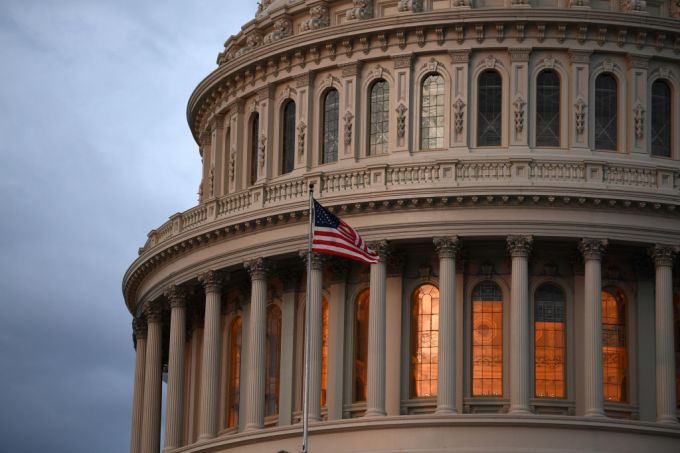The quality of a financial market is driven by liquidity. Companies want to list on the NYSE, because that’s where the most financial investors in the world are located, and the thicker the market for investors, the better the valuations for companies. The NYSE has “problems” though — its closed most hours of the week, for instance, because humans are lazy, and it has a bunch of rules on what can be listed and how.
So blockchain! Blockchain solves this liquidity problem by allowing traders to operate 24/7, sell assets immediately, yada yada yada. All the stuff that’s been talked about ad nauseam the past few years.
I wanted us to get a better feel for the real liquidity of blockchain technology, and so we had Extra Crunch contributor Galen Moore crunch the numbers. And, my god, these markets are about as liquid as my dining room table.
In his analysis of security token offerings, Moore finds that liquidity can be measured in dollars a day. As in, sometimes there is someone, somewhere that wants to trade a token, but it isn’t all that often! For BCAP and SPICE, there are days that had no liquidity at all despite millions in purported market value.
It’s straight out of my market microstructures textbook that I used to read before going to bed. When you have lightly-traded assets, you want to build a market that concentrates trades in that asset into tight windows, in order to increase the thickness of the market. These securitized tokens would do better with an hour of trading per week when more buys and sells could be matched together, rather than the current model of no one trading ever.
We talk a lot about the user story from a utility token perspective, but we also need to talk about the user story from an investor perspective. Markets are sort of the classic case of network effects. Blockchain technologies are great and I am a “believer” for whatever that means, but if you are going to run a market, there has to be a crowd that shows up — or there is no market.
Why can’t we operate anything?

Leadinglights via Getty Images
The Wall Street Journal had a great piece yesterday on the travails of Amtrak, which in addition to being an actual business, needs to get approval from Congress to make operational changes (and you think your board is tough). If you thought we couldn’t build anything, wait until you see how little we can operate anything as well.
This story has everything:
- Train nostalgics want Amtrak to continue running unprofitable, long-distance routes daily
- Congressmen with rural stops want unprofitable routes to continue serving stations that essentially have no passengers
- Unions are opposed to removing dining cars on trains that operate over short distances
- Private rail owners don’t want more frequent service because it makes scheduling freight trains more complicated
- Amtrak’s entire long-distance fleet has aged and needs to be replaced, but no one can agree on what configuration new train sets should have
- Even so, Congress wants Amtrak to become more financially solvent (!)
And so you get to this fact:
Amtrak’s long-distance routes carried about 4.5 million riders in fiscal 2018, down slightly from the previous year. Amtrak reported an adjusted operating loss of $543 million on those routes in 2018, more than offsetting the $524 million in earnings coming from its operations on the Northeast Corridor.
Long distance passengers are just 15% of Amtrak’s total, but hold the company hostage.
We have an infrastructure obsession over here these days, but it’s not just planning and construction that matters — how we operate infrastructure is even more crucial for preserving the quality of the user experience. As Amtrak makes clear, the kinds of sprawling debates that plague the planning process come up just as often in operations.
Quality news from around the web

Matt McClain/The Washington Post via Getty Images
Google Policy “Reorg”
Dave McCabe at Axios got the scoop yesterday that Google is re-organizing its policy wing. The details are vague and don’t portend huge changes to its model. One interesting note is that the shop will be called “Government Affairs and Public Policy” instead of just “Public Policy,” indicating that Google clearly sees a need to lobby more forcefully on its behalf than it has in the past. The company will also bolster regional teams, which seems critical in emerging markets like India and Indonesia, where massive elections this year threaten to rapidly change the policy environment for large foreign tech companies.
Two internets is increasingly the reality at the protocol level too
We’ve talked a lot about the splitting of the internet into internets due to content firewalls and barriers to competition in the tech sectors in countries like China, India, and elsewhere. Another dynamic is that the very protocols that run the internet are now diverging between these countries. The FT noted that emerging markets have made almost no efforts to migrate to IPv6, the modern Internet Protocol system, from IPv4. With more and more devices coming online and the IP address space exhausted, that split on the core protocol of the internet complicates keeping the world on one platform.
Does Saudi Arabia’s Asia investments paint a blurry picture for the SoftBank Vision Fund?
During his tour across Southeast Asia this week, Saudi Arabia’s crown prince Mohammed bin Salman has been publicizing his intentions to invest billions in the region. And we’re not talking about chump change here — just yesterday during his visit to India, MBS stated Saudi Arabia was looking to invest at least $100 billion in the country over the next two years, which came just days after Saudi Arabia reportedly signed agreements to pour around $20 billion into Pakistan.
Besides the fact that Saudi Arabia is diving further into the infrastructure race in Southeast Asia and that the country is actively engaged with national rivals, Salman’s statements interestingly came right after reports that Saudi Arabia’s Public Investment Fund was growing frustrated with the SoftBank Vision Fund where it has invested $45 billion. Based on the crown prince’s ambitious claims in Southeast Asia, it seems like Saudi Arabia has more than enough alternatives to SoftBank to put its money to work, which might create some more around hopes for a second Vision Fund if the reports of LP discontent are true. ~ Written by Arman Tabatabai
Countries are torn on how to transition to a cashless future
Pieces from Quartz and the New York Times highlighted a developing story of how countries are approaching the swift decline in cash. As regions move closer to cashless societies, policymakers are voicing concerns over equity, data treatment, and the underbanked. Such negative externalities have been well-documented in countries like Sweden, where cash is rarely used, infrequently printed and is no longer accepted in most places.
To avoid the same unintended consequences, the UK will publish a roadmap for handling falling cash usage next month, while policies banning cashless stores have already been passed or discussed in major US cities and states. While other countries like South Korea, India and China have advocated for cashless payments, the UK and the US are hoping to create a more gradual, manageable and predictable transition. ~ Written by Arman Tabatabai
JVP’s new $220 million fund leverages its frontier tech and cyber pedigree
Yesterday, Israel-based Jerusalem Venture Partners (JVP) announced it had closed on $220 million in committed capital for its eighth fund, which will focus on investing in early and mid-stage companies in frontier tech sectors like AI, cybersecurity, and computer vision. JVP has a long track record of investing in these categories and working with governments. The firm has worked with the Israeli government to help run several leading cybersecurity accelerators, and recently partnered with New York City to help launch the city’s $100 million Cyber NYC program focused on establishing a dominant cybersecurity ecosystem. Israel has long been a source of new innovative cyber solutions while New York’s central financial institutions have been some of the largest customers and stakeholders in cybersecurity. Given its established and expanding presence in these markets, JVP seems well-positioned to source deals and grow companies that fit under the focus of its new fund. ~ Written by Arman Tabatabai
Obsessions
- More discussion of megaprojects, infrastructure, and “why can’t we build things”
- We are going to be talking India here, focused around the book “Billonnaire Raj” by James Crabtree, who we just interviewed and will share more soon
- We have a lot to catch up on in the China world when the EC launch craziness dies down. Plus, we are covering The Next Factory of the World by Irene Yuan Sun.
- Societal resilience and geoengineering are still top-of-mind
- Some more on metrics design and quantification
Thanks
To every member of Extra Crunch: thank you. You allow us to get off the ad-laden media churn conveyor belt and spend quality time on amazing ideas, people, and companies. If I can ever be of assistance, hit reply, or send an email to danny@techcrunch.com.
This newsletter is written with the assistance of Arman Tabatabai from New York
from TechCrunch https://ift.tt/2tuyShM

No comments:
Post a Comment